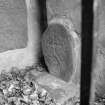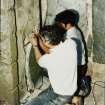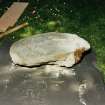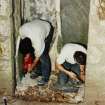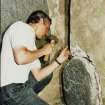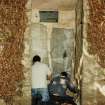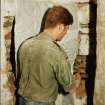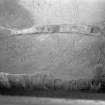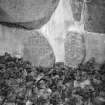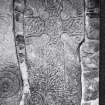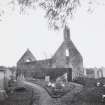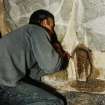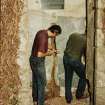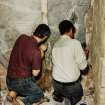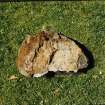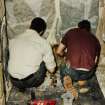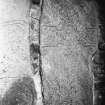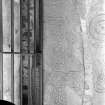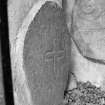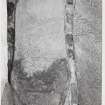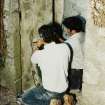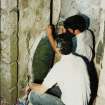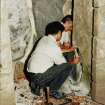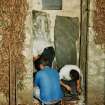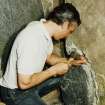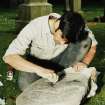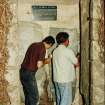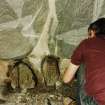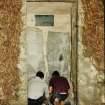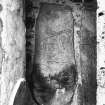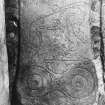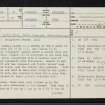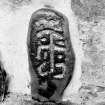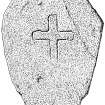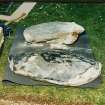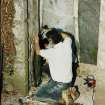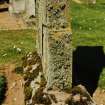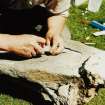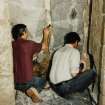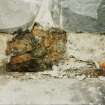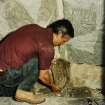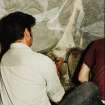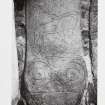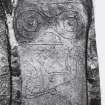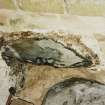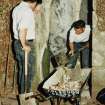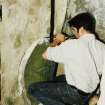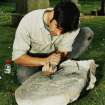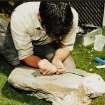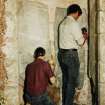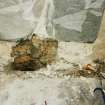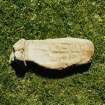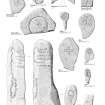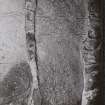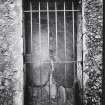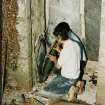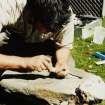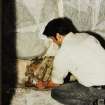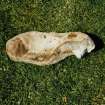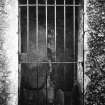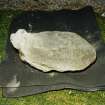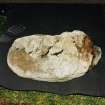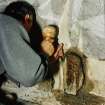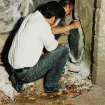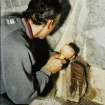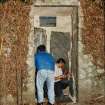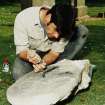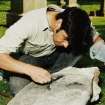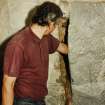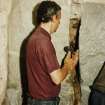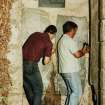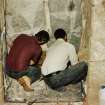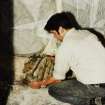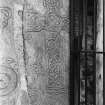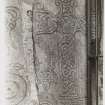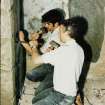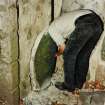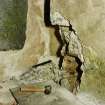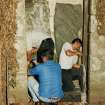Dyce, Saint Fergus' Church, Sculptured Stones
Cross Incised Stone(S) (Early Medieval), Cross Slab (Early Medieval), Pictish Symbol Stone(S) (Pictish)
Site Name Dyce, Saint Fergus' Church, Sculptured Stones
Classification Cross Incised Stone(S) (Early Medieval), Cross Slab (Early Medieval), Pictish Symbol Stone(S) (Pictish)
Alternative Name(s) Chapel Of St Fergus; Old Parish Church Of Dyce; Dyce, Old Church; Dyce 1; Dyce 2
Canmore ID 19464
Site Number NJ81NE 8
NGR NJ 8752 1541
Datum OSGB36 - NGR
Permalink http://canmore.org.uk/site/19464
First 100 images shown. See the Collections panel (below) for a link to all digital images.
- Council Aberdeen, City Of
- Parish Dyce
- Former Region Grampian
- Former District City Of Aberdeen
- Former County Aberdeenshire
Field Visit (20 October 1961)
Four other stones (NJ81NE 8.03), which have been turned up in the graveyard, are also preserved in the recess. They vary in size from 12ins by 6ins by 2ins up to 2ft 11ins by 1ft 10ins by 11/2ins; each bears a carved cross of different design (illustrated by Ritchie).
Visited by OS (EGC) 20 October 1961.
J Ritchie 1911.
Desk Based Assessment (1961)
NJ81NE 8.00 8752 1541
NJ81NE 8.01 8752 1541 Pictish Symbol Stone
NJ81NE 8.02 8752 1541 Pictish Cross-Slab
NJ81NE 8.03 8752 1541 Stones: Cross-Incised
For Dyce, Old Parish Church (of St Fergus), see NJ81NE 13.
(NJ 8752 1541) Sculptured Stones (NR)
OS 25" map (1965)
There are two symbol stones (NJ81NE 8.01 and 8.02) in a recess in the E gable of St Fergus' Church (NJ81NE 13). One (NJ81NE 8.01) is of Class I and is incised with an 'elephant' symbol above a double disc and Z-rod. The other (NJ81NE 8.02) is of Class II and is sculpted on one face only with a Celtic cross ornamented with a central boss of spiral work and elsewhere with interlace. Beside it and below the shaft are the crescent and V-rod, mirror case, double disc and Z-rod, and the triple ring symbols.
Both of these stones are said to have been found in the glebe. They were built into the churchyard wall for a long time before being placed in their present position (J R Allen and J Anderson 1903).
J Ritchie 1911; E W MacKie 1975; R W Feachem 1963
Information from OS.
Publication Account (1986)
The earlier of the two Pictish stones is the slab incised with a large beast which has a fme plume and muscles suggested by scrolls. Below the beast is a bold double disc and Z-rod, with simple infIlling. The other slab bears a large, knot-fIlled cross with hollowed angles and scroll ends to the arms, all carved in low relief Symbols flank the cross, as at Migvie (no. 60). These are a crescent and V-rod, a disc and rectangle, a triple disc (or cauldron) and a double disc and Z-rod. Although all the symbols have ornate infIlling, their positioning on the stone is subservient to the basic Christian statement. The four smaller stones in the recess are early medieval grave markers.
Information from ‘Exploring Scotland’s Heritage: Grampian’, (1986).
Reference (1997)
One class I symbol stone - Dyce 1 - Elephant over a double-disc and Z-rod.
One class II symbol stone - Dyce 2 - Cross with a crescent and V-rod over a vertical triple-disc on the left and a mirror-case over a double-disc and Z-rod on the right.
A Mack 1997; (undated) information in NMRS.










































































































